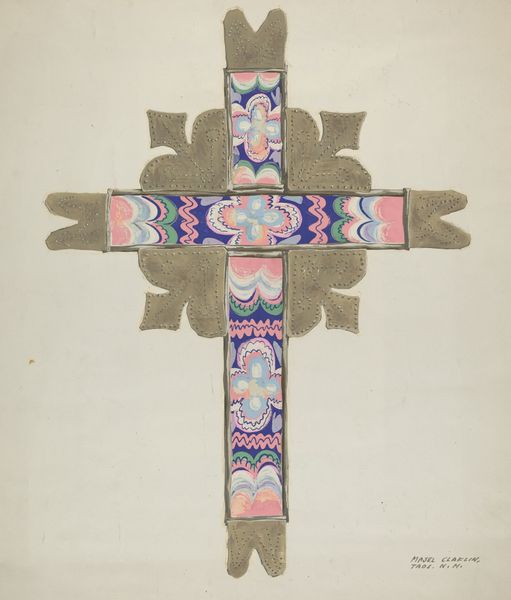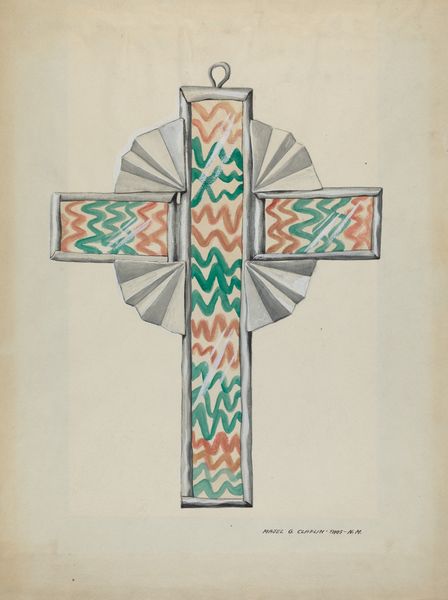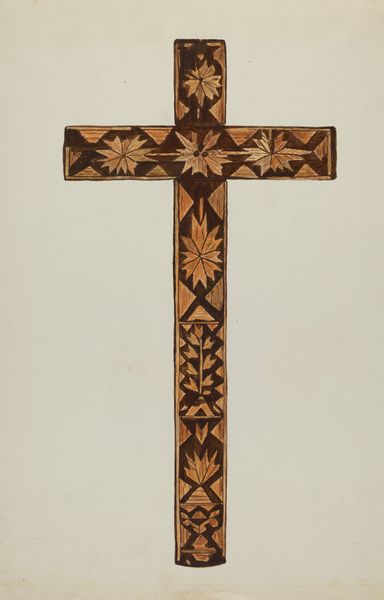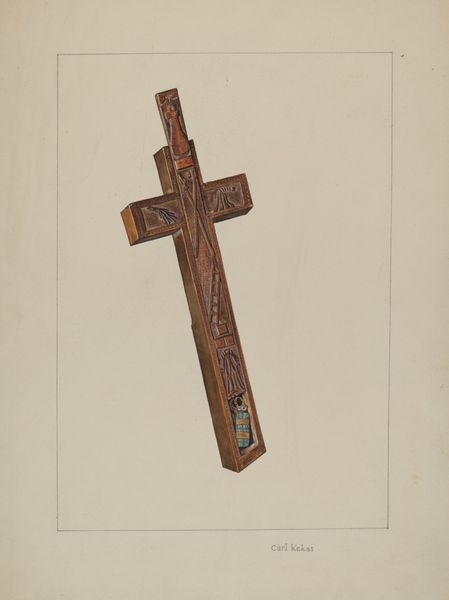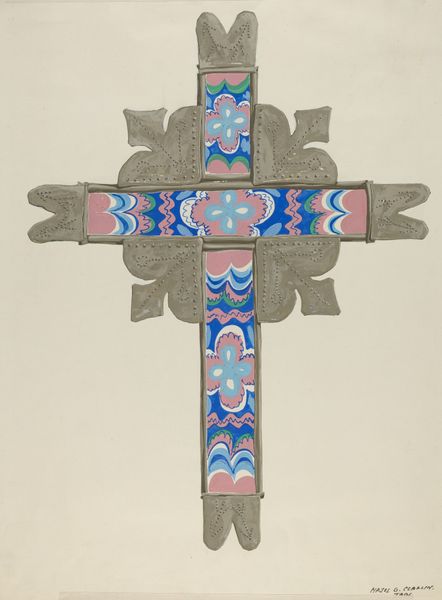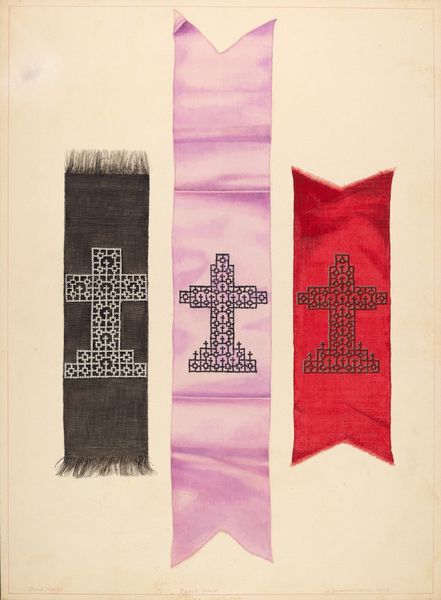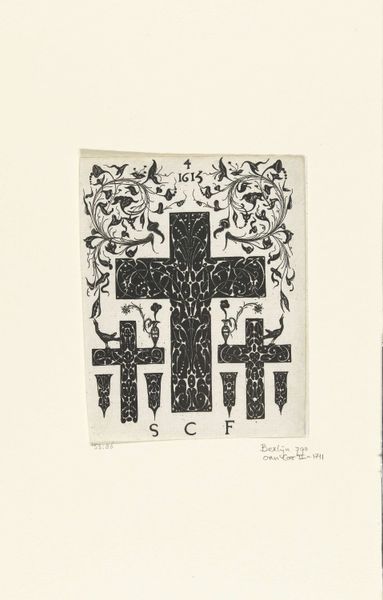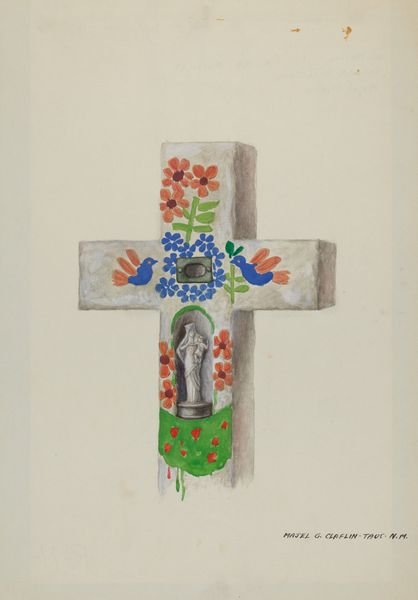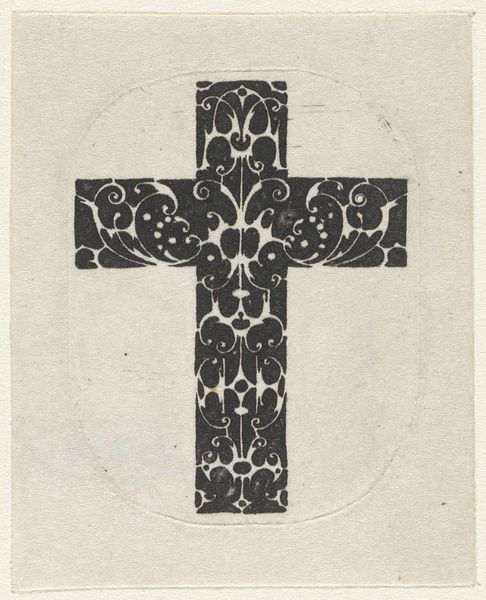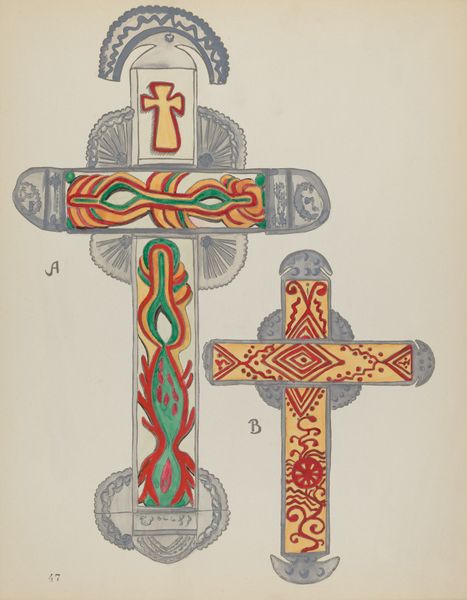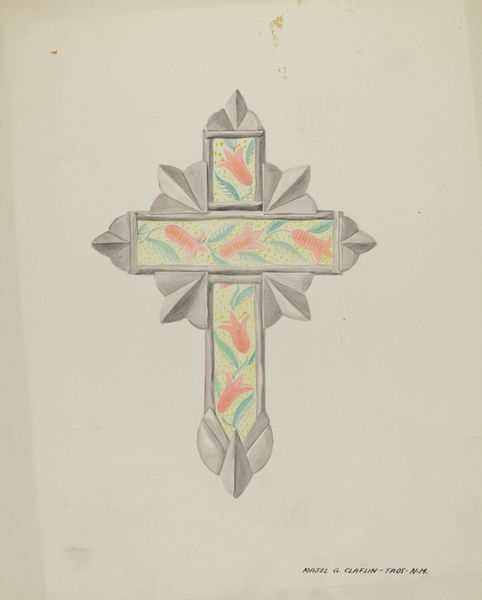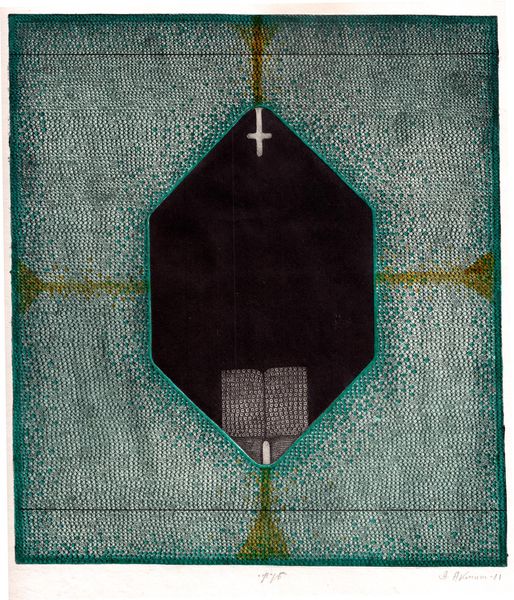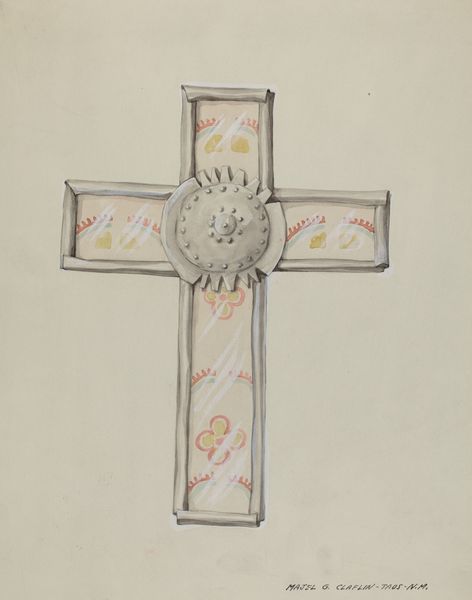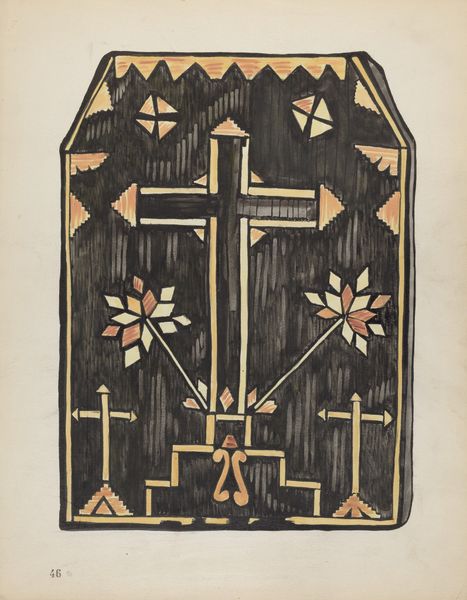
drawing, mixed-media, fibre-art, textile, watercolor
#
drawing
#
mixed-media
#
fibre-art
#
water colours
#
textile
#
abstract
#
watercolor
#
geometric
#
watercolour illustration
#
watercolor
Dimensions: overall: 35.5 x 25.5 cm (14 x 10 1/16 in.) Original IAD Object: 7 3/4" long; 3" wide
Copyright: National Gallery of Art: CC0 1.0
Curator: Let's talk about Ellen Duncan's "Bookmark with Design of Cardboard," created around 1937. It's a mixed-media piece that combines drawing, fiber art, and textile elements. Editor: My immediate impression is of fragility. That light blue and the delicate fringe give it an ethereal, almost weightless quality, which contrasts with the strong central cross form. Curator: Absolutely. The cross isn't merely a symbol, it's embedded within complex systems of faith and social structure. In 1930s Britain, religious identity played a vital role in the stratification of society along lines of class, gender, and national origin. Duncan seems to use the iconography of a sacred object in her design work, perhaps asking us to reconsider what constitutes something worth commemorating or cherishing. Editor: And look closely at the methods, though. Notice the interplay between watercolor and thread. The watercolors give that initial, flat plane, then the embroidery-like work on the cross is applied. This material approach asks viewers to focus on labor itself—it highlights process through a hybrid that collapses distinctions between what is functional (the bookmark) and the level of intricacy used, a visual experience (drawing, watercolour). It gives us so much to see by re-framing mundane work that women do with great pride and technical refinement! Curator: Precisely. What are her influences as a craft artist creating design samples? Does the intersectional symbolism within the larger cross promote or critique societal gender and class disparities, and if so, how do those elements in her practice help other women? What would it mean if her intent in creating and cataloguing patterns were connected to the development of female labour models in times of high poverty? Editor: Thinking materially, I see not just a design but a record, potentially, of available resources, even a form of social documentation. We could even delve into questions around the industrialization of textile production happening then, how factory methods shifted notions of craft labor… Curator: Yes! The abstraction within its geometrical design also invites further reflection and discussion around modernist values concerning simplicity or functionality that often seem removed from labour inequities across diverse cultural traditions worldwide. Editor: The simplicity can distract from considering materiality altogether—precisely why it rewards focused reflection! I now think this might challenge modernist notions of a rigid high/low art divide by showcasing traditional "feminine" handiwork processes in combination with fine art media in its execution. Curator: And thinking of textiles reminds us that it would be relevant in discussions around how such work impacts marginalized individuals’ experiences regarding culture while simultaneously contributing value during times characterized as "difficult", economically and beyond. Editor: Thinking carefully, I walk away viewing it through these layers that help expand perceptions far above simply viewing materials on their own. We're appreciating skills that women pass onward generationally; how textiles provide insights impacting our everyday practices beyond appearances Curator: Thank you!
Comments
No comments
Be the first to comment and join the conversation on the ultimate creative platform.
